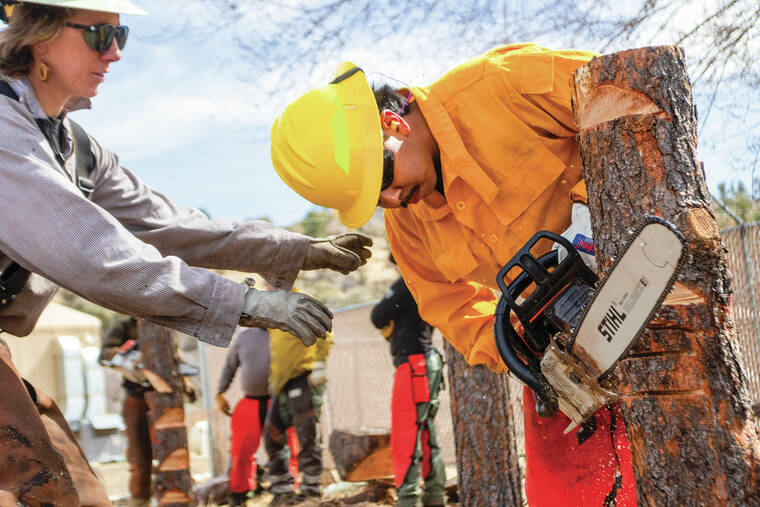US wildfires are getting bigger and more complex, prompting changes in firefighting workforce
PRESCOTT, Ariz. — It’s shaping up to be a long wildfire season, with Texas already seeing its largest blaze in recorded history and firefighters becoming overwhelmed with recent blazes in Virginia.
Just in the first three months of the year, more than 2,669 square miles (6,912 square kilometers) were charred in the United States. That’s more than half of last year’s total, and forecasters are predicting elevated risk of fires over the coming months in the Great Lakes region, parts of the Midwest, Southwest and in Hawaii.
ADVERTISING
“We’re going to be busy. I couldn’t tell you exactly where right now, but we are going to be busy,” said Alex Robertson, acting director of fire and aviation at the U.S. Forest Service.
With fires growing in size and duration, federal officials in charge of juggling resources and dispatching crews are pivoting to a new business model they describe as the biggest shift in wildfire management in decades. They say it will offer more flexibility when responding to wildfires and ensure that there are more personnel with the training and qualifications needed to deal with the most complex fires.
It’s an idea that has been circulating for years due to the strain put on the wildland firefighting workforce as heat waves and historic drought tied to climate change have made wildfires harder to fight in the American West. Scientists have said climate change has made the region much warmer and drier in the past 30 years and will continue to make the weather more extreme, and wildfires more frequent and destructive.
In past years, a shortage of top-level Type 1 teams has resulted in Type 2 teams taking on bigger assignments — like those that threaten multiple communities and require more firefighters, aircraft and a constant stream of other resources. This season, 44 leadership teams have been formed to respond to the largest fires across the country.
The Forest Service hopes to hire around 11,300 firefighters this year.
The lengthening of fire season also has changed the makeup of seasonal fire crews and permanent positions.





